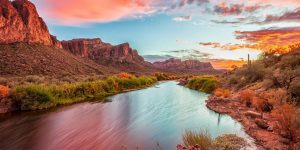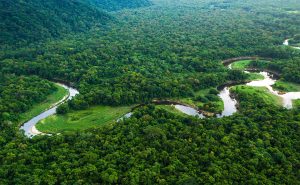
21 interesting facts about Mediterranean ecosystems
444
Mediterranean ecosystems, characterized by their unique climate of hot, dry summers and mild, wet winters, are among the most biologically diverse and ecologically rich environments on Earth. Spanning across five major regions including the Mediterranean Basin, California, central Chile, the Western Cape of South Africa, and parts of Western and South Australia, these areas support an extraordinary variety of plants and animals adapted to living with limited water resources and seasonal fires. Despite covering only a small fraction of the Earth’s surface, Mediterranean ecosystems play a critical role in maintaining biodiversity and providing ecosystem services. Here are 21 interesting and informative facts about Mediterranean ecosystems that highlight their importance, uniqueness, and the challenges they face.
- Mediterranean ecosystems cover less than 5% of the Earth’s land surface.
- They are home to approximately 20% of the world’s plant species.
- The Mediterranean Basin alone has over 25,000 plant species, with about half being endemic.
- Cork oak forests in the Mediterranean are important for biodiversity and as a source of cork.
- The Mediterranean climate is one of the rarest climate types, found only in five regions worldwide.
- Fire is a natural and essential part of the ecology in these ecosystems, helping to shape the landscape and biodiversity.
- The unique climate has led to the evolution of deep-rooted plants that can access water stored deep in the soil during dry months.
- Maquis and garrigue are two types of shrubland habitats typical in the Mediterranean, characterized by drought-resistant, aromatic plants.
- The Mediterranean Sea, central to the largest of these ecosystems, is considered one of the world’s biodiversity hotspots.
- Adaptations such as waxy leaves, small leaf surfaces, and long taproots help plants conserve water.
- Many species have evolved to germinate, flower, and seed quickly in the wet winter and spring months.
- The Mediterranean diet, rich in plant-based foods, originates from the crops suited to the climate of the region.
- Overgrazing, deforestation, and urbanization pose significant threats to Mediterranean ecosystems.
- The California Floristic Province, a Mediterranean region, has over 3,488 native plant species, 61% of which are endemic.
- Soil in these regions is often nutrient-poor, leading plants to evolve efficient nutrient uptake and storage strategies.
- The Western Cape of South Africa, part of the Cape Floristic Region, contains the highest number of endemic plant species of any continental area its size.
- Traditional agricultural practices in these areas, such as terracing and crop rotation, have shaped the landscape over millennia.
- Climate change poses a significant threat to Mediterranean ecosystems, potentially altering precipitation patterns and increasing the frequency and intensity of wildfires.
- Chaparral, a type of vegetation found in California’s Mediterranean ecosystem, includes many fire-resistant species.
- Conservation efforts in these regions often focus on protecting key habitats and species, as well as sustainable management practices.
- The concept of xeriscaping, or landscaping with drought-tolerant plants, originates from practices suited to Mediterranean climates.
Mediterranean ecosystems are remarkable for their rich biodiversity, unique climatic conditions, and the array of life forms that have adapted to thrive under challenging environmental pressures. These ecosystems provide invaluable ecological services, including carbon sequestration, soil formation, and water purification, as well as supporting agricultural and cultural traditions that date back thousands of years. However, they face increasing threats from human activity and climate change, highlighting the urgent need for conservation efforts to protect these irreplaceable global treasures. Understanding and preserving Mediterranean ecosystems is not only crucial for the regions they encompass but also for the global biodiversity and ecological stability they support.
 MillionFacts
MillionFacts 
 Related posts
Related posts 











